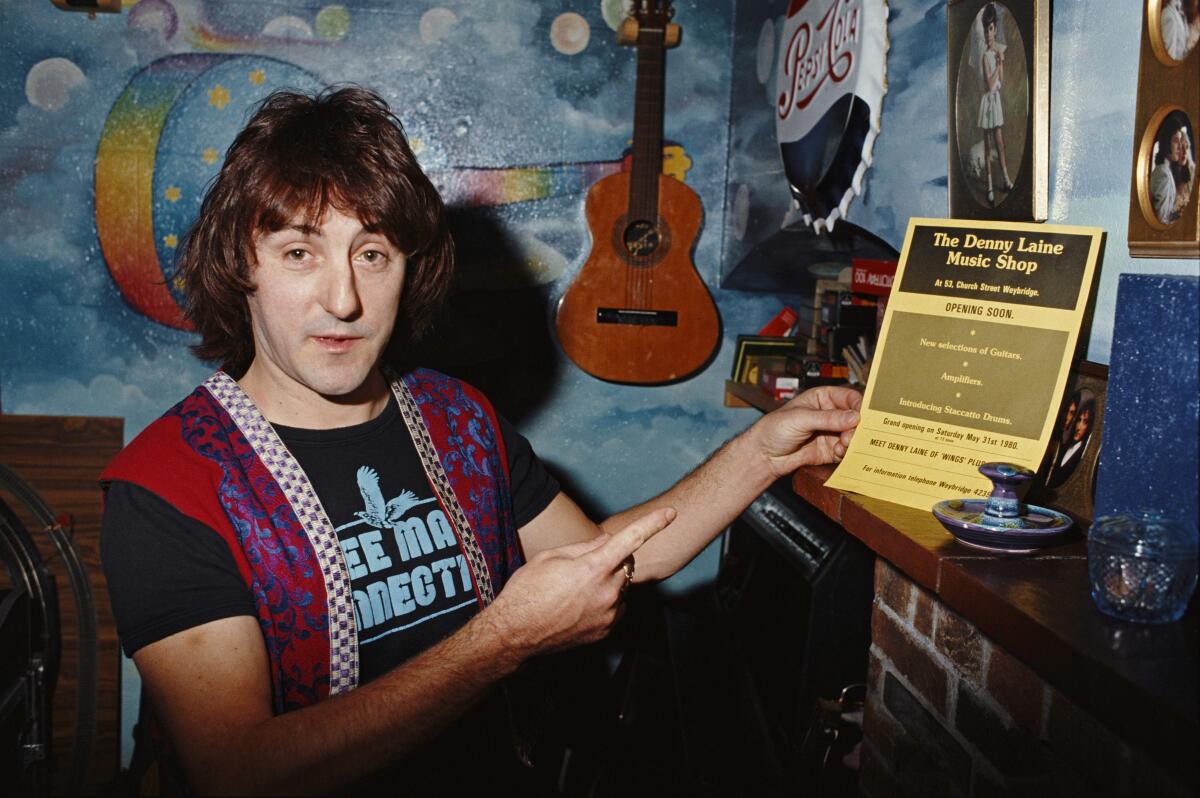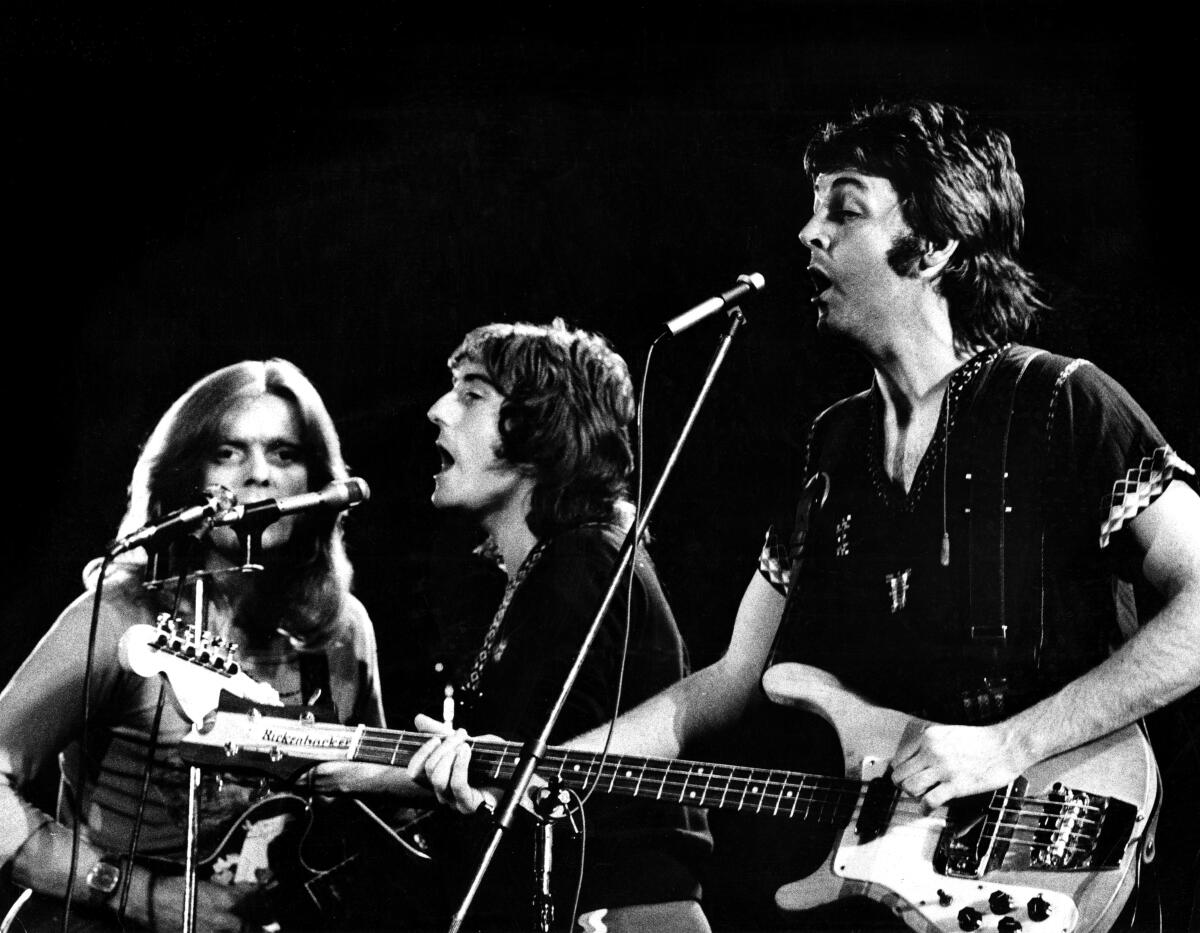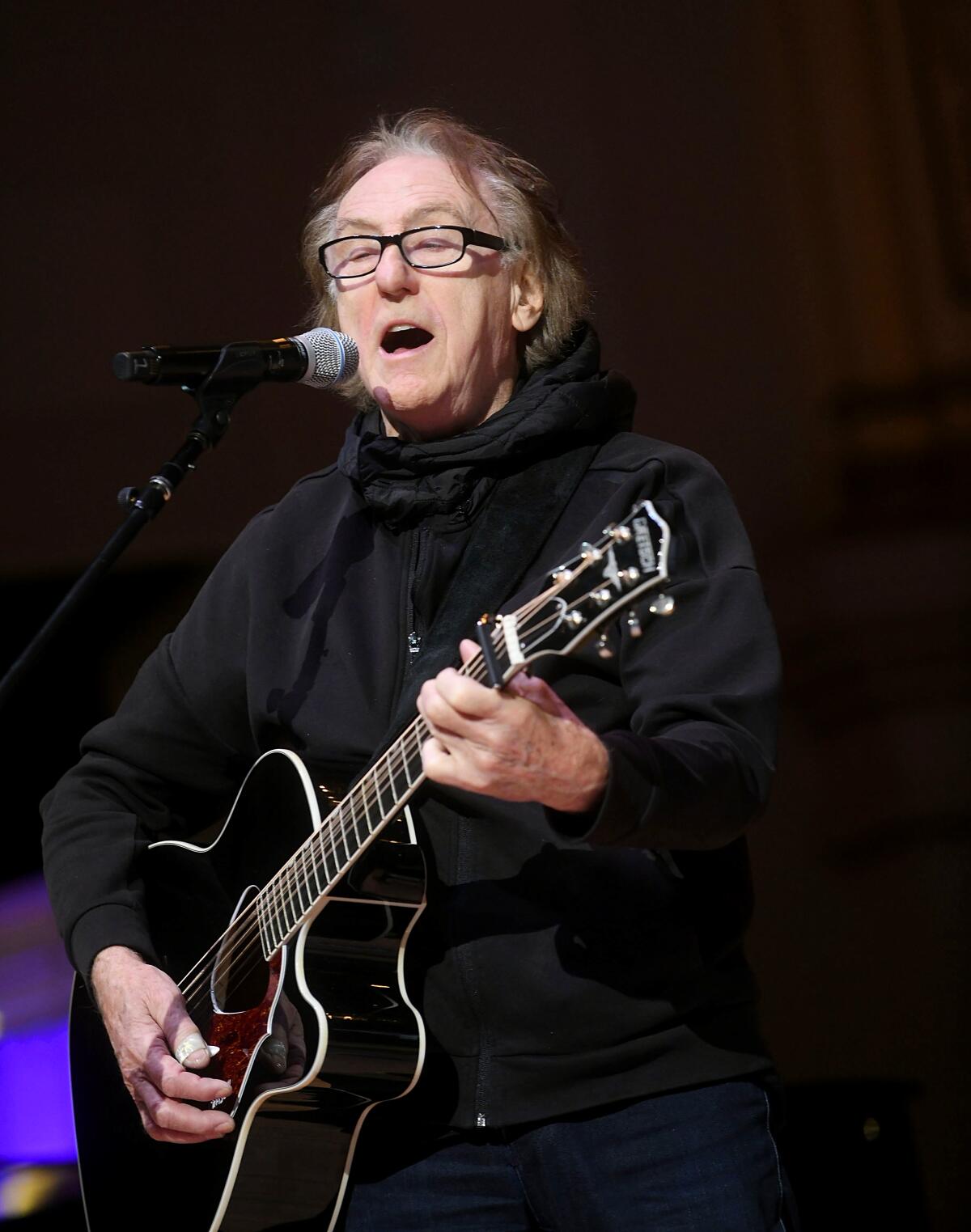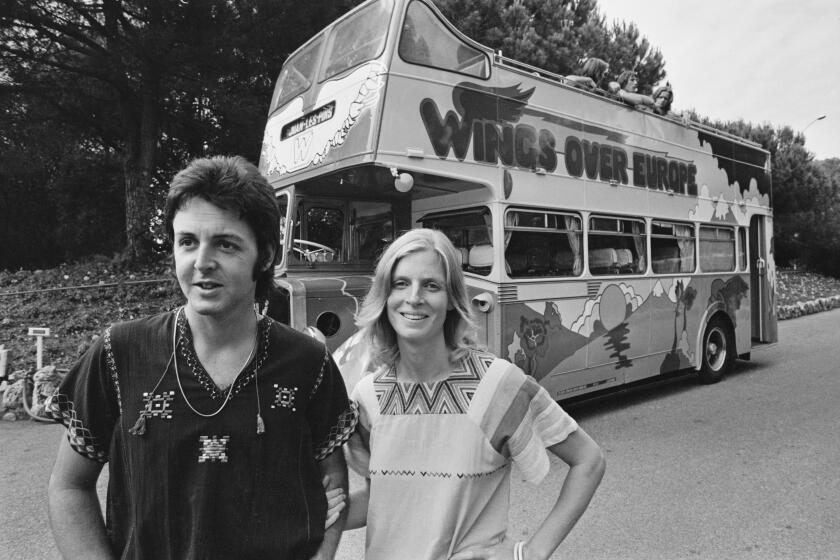Denny Laine, co-founder of Moody Blues and Wings, dies at 79

- Share via
Denny Laine, a founding member of the Moody Blues who later served as Paul McCartney’s right-hand man in Wings, died on Tuesday at age 79.
His death was announced on social media by his wife, Elizabeth Hines. “I was at his bedside holding his hand as I played his favorite Christmas songs for him,” she wrote. “My world will never be the same. Denny was an amazingly wonderful person, so loving and sweet to me. He made my days colorful, fun, and full of life — just like him.”
The cause of death was interstitial lung disease. Laine had been suffering from a variety of illnesses after contracting COVID-19 in 2022.
Whether you’re a vinyl newbie or hardcore collector, a K-pop stan or a crusty punk, a Latin music fan or a weekend DJ, these record stores have something for everyone.
Laine sang the high, pleading lead vocals on “Go Now,” the breakthrough hit from the Moody Blues in 1964. Although he was inducted into the Rock & Roll Hall of Fame with the Moody Blues in 2018, he wasn’t a member for very long. By the end of 1966, he left the group, spending the rest of the decade wandering through a variety of bands before forming Wings with Paul and Linda McCartney in 1971. Wings had a volatile lineup but Laine played guitar in every incarnation of the group, occasionally stepping forward to sing lead — he sang most of the amiable shuffle “I Lie Around,” while the moody “Time to Hide” provided him time in the spotlight while on tour — and often co-writing songs with Paul McCartney, including “Mull of Kintyre,” a folky paean to Scotland that was the bestselling single of all time in the United Kingdom for several years after its 1977 release.

McCartney paid tribute to Laine on social media. “I have many fond memories of my time with Denny,” he wrote, “from the early days when the Beatles toured with the Moody Blues. Our two bands had a lot of respect for each other and a lot of fun together. Denny joined Wings at the outset. He was an outstanding vocalist and guitar player .... We had drifted apart but in recent years managed to reestablish our friendship and share memories of our times together.
“Denny was a great talent with a fine sense of humour and was always ready to help other people. He will be missed by all his fans and remembered with great fondness by his friends.”
Born Brian Frederick Hines on October 29, 1944, in Tyseley, Birmingham, Laine learned guitar at an early age, finding inspiration in the hot dance music of Django Reinhardt. When he turned 12, he played his first professional gig as the frontman for Denny Laine and the Diplomats, swiping the last name from Frankie Laine, a crooner who was a particular favorite of his sister. With Bev Bevan, a drummer who later anchored the Move and Electric Light Orchestra, occasionally in tow, Laine performed with the Diplomats into the early 1960s, departing in 1964 to form the Moody Blues with Mike Pinder and Ray Thomas.
Initially rooted in the blues, the Moody Blues found success branching into R&B and soul, a combination showcased on their version of “Go Now,” a song by Larry Banks and Milton Bennett originally recorded by Bessie Banks for producers Jerry Leiber and Mike Stoller earlier in 1964. The stately, dramatic rendition by the Moody Blues became a transatlantic smash, reaching No. 1 in the U.K. and the Top 10 in the U.S. Eager to capitalize on their success, the Moody Blues toured in support of “Go Now,” a decision that grated on Laine, who wanted the group to immediately cut a second album. The disagreement led to his departure in 1966.

As the Moody Blues found greater fame with their 1967 album “Days of Future Passed” and its hit singles “Nights in White Satin” and “Tuesday Afternoon,” Laine released a few solo singles before forming and disbanding a succession of ambitious bands. First came the Electric String Band, a psychedelic outfit that blended hooky rock with orchestral strings featuring guitarist Trevor Burton, who was moonlighting from the Move. After Burton severed ties with that band, the two musicians spent some time in Ginger Baker’s Air Force — the jazz-inflected band from the former drummer of Cream — then went on to form Balls, which released one single before splitting in 1971.
At that point, Paul McCartney contacted Laine about the possibility of joining him and his wife, Linda, in a new band. Eager to play live concerts since the waning days of the Beatles, McCartney conceived Wings as a back-to-basics rock ‘n’ roll band, debuting the group on 1971’s modest, shambling “Wild Life.” From the outset, the group had difficulty maintaining a stable lineup, but Laine developed a productive relationship with McCartney. He was the only member to remain when Wings was whittled to a trio for “Band on the Run,” the 1973 album that found McCartney righting himself both creatively and commercially. Over the next few years, Wings was one of the biggest bands in rock, a period in which Laine regularly took lead spots on record and onstage. He also released two solo albums during this time, including 1976’s “Holly Days,” which featured Paul and Linda.
We assess 50 years of post-Beatles Paul: from DIY solo to Linda and Wings, from Stevie to MJ to Rihanna and Kanye.
After wrapping up the tour for “Wings at the Speed of Sound” in 1977, the band pared back down to the trio of the McCartneys and Laine, and this lineup released “Mull of Kintyre,” which spent nine weeks at the top of the U.K. charts. This turned out to be the last flush of success from Wings. The promotional campaign for the hard-rocking “Back to the Egg” was derailed after McCartney’s arrest in Japan for marijuana possession in 1980. McCartney attempted to revive Wings later that year but he had little interest in touring after his bust and John Lennon’s murder in December of that year. Laine left Wings in 1981, effectively bringing the band to an end.

Laine would play on McCartney’s 1980s albums “Tug of War” and “Pipes of Peace,” but he spent the next decade and beyond concentrating on his solo career. Although he played with World Classic Rockers, a collective of surviving rockers featuring Nick St. Nicholas of Steppenwolf, Laine didn’t duck away from the legacy of either Wings or McCartney. He often toured playing the music of Wings, and also cut re-recordings of his older work.
Laine is survived by Hines, whom he married in July, along with his four children.
More to Read
The biggest entertainment stories
Get our big stories about Hollywood, film, television, music, arts, culture and more right in your inbox as soon as they publish.
You may occasionally receive promotional content from the Los Angeles Times.












